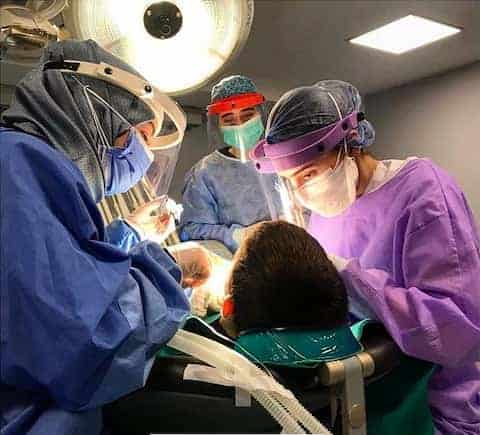Our teeth consist of layers called enamel, dentin and pulp. These layers have separate functions. The pulp layer is the layer where the nerves and nourishing veins of the tooth are located and it provides the biting feeling, hot-cold feeling or pain sensation of our teeth. It is connected to the circulatory system of our body with the nourishing vessels it has.
In cases such as tooth decay, tooth fracture, fractures up to the pulp tissue or caries reaching the pulp tissue and in traumatic cases, we may experience various problems such as toothache, inflammation or facial swelling or cyst formation.
In these cases, these diseases that occur in the pulp of the tooth should be treated.
Endodontics is the branch that deals with the treatment of these diseases in the pulpal layer of the tooth.
The carious tissue of the tooth is cleaned, the pulp with diseased nerve and vascular tissue is cleaned, and the canals are washed with various irrigation solutions. The microorganisms that cause inflammation are removed from the environment with various antiseptic agents applied into the canal. After all these stages, the root-canal system is filled and the treatment is terminated.
Our teeth are the hardest bones in the body. But there are situations where even they are broken. Teeth can be broken by impact during activity in young and children, as well as due to the loss of mechanical strength that occurs with age or due to loss of vitality after root canal treatment.
If you can find it, take the broken piece and contact a dentist directly.
Treatments applied in tooth fracture: There are several different treatment methods in tooth fractures. These vary depending on how the tooth is broken. The tooth consists of 3 layers of enamel, dentin, pulp. If the tooth fracture does not go deep to the pulp level, the tooth can be repaired by bonding or veneer porcelain procedures depending on the size of the fracture. However, if the fracture has reached the pulp layer, root canal treatment is performed before these procedures. The fracture direction of the tooth fractures and where it is broken is also important. If it is broken horizontally at the root level, your tooth is fixed first, then canal treatment is performed and its healing is followed. However, if your tooth is broken vertically and this is down to the broken roots, the tooth should be extracted. Tooth deficiency can be corrected with implants and prosthetic treatments.
Regular care of our teeth is very important for our daily life. When it is disrupted, important dental diseases are experienced. One of these important diseases is tooth abscess. Dental abscess can occur due to the inflammation caused by the progress of dental caries or an infection that starts in the gums, reaching the root of the tooth and infecting the tooth. Although these abscesses are usually painful and active, they can sometimes be found and enlarged passively for months without causing any discomfort to the person. In general, abscessed teeth manifest themselves with pain when biting, pain when standing still. Its location can also be determined with an x-ray you can take in our clinic. How to treat dental abscesses. Treatments applied in cases of dental abscess may vary according to the size, location and type of abscess. Abscesses usually heal as a result of root canal treatment in abscessed teeth. However, if the abscess is caused by a disease in the gums, then our gums should be treated. In some cases, the abscess can be very severe. In this case, a significant swelling on your face, limited mouth opening, redness, warmth and pain in that area may be seen. In such a case, antibiotic treatment may be applied first and then the tooth may be extracted.
If you stop your treatment because of the alleviation or the end of your pain as a result of antibiotic application, you may experience the same ailments again in the future. Antibiotics do not cure dental abscesses or dry out their inflammation. They simply turn an active inflammation into inactive. Even if it is passive, dental abscess is a source of inflammation in the body and they reduce overall body immunity. In particular, they may affect the quality of life and treatment course of heart patients. For these reasons, you should have your treatments and not stop halfway.
Bruxism is a set of symptoms that manifest itself when patients' teeth clench, especially at night, depending on many factors, especially stress. Advanced Bruxism:
